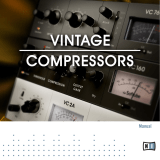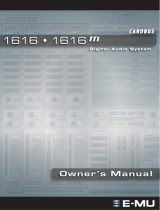
1
Thank you for purchasing the X-Comp plug-in for the SSL
Duende platform.
X-Comp can deliver the transparent audio finesse of a
mastering grade stereo compressor or be driven to inject
character and raw power to rival the SSL Listen Mic
Compressor. In X-Comp we haven’t just modelled a particular
compressor, but have provided a set of features and controls
that allow the emulation of many vintage and modern
compression designs based on a well loved SSL feed forward
compressor algorithm.
Extensive visual feedback includes drag and move
threshold/ratio graphic, Amplitude Histogram, Gain
Reduction History and Stereo input and output metering with
peak hold, separate RMS meter and dynamic history display.
Both the compressor audio path and side-chain signal can be
manipulated in the frequency domain via the Bleed Through
controls. These alter the frequency dependant behaviour of
the compressor through the use of 1st order high and low pass
filters, delivering user friendly Frequency Dependant Parallel
Compression. This is great at focusing the compression on a
certain frequency range, or allowing parts of the spectrum past
the compressor.
The knee parameter provides a great deal of control over the
way the compression is applied allowing for everything from
precise dynamic control to more subtle transparent effects.
The inclusion of a second knee provides the facility to back off
the compression towards the top of the dynamic range in
conjunction with the Max GR feature. This allows the
transients to breath and preserves the life of the signal whilst
still offering a great deal of dynamic control.
Carefully selected control laws mean that setting the exact
value of a parameter via a control knob is made easy and
intuitive, as the critical ranges have been given the most
resolution. All rotary controls can be altered using the mouse,
mouse wheel or entered numerically.
The plug-in is available in both mono and stereo instances in
VST, AU and RTAS formats making it compatible with
virtually all audio software currently available on both PC and
Mac. As with other Duende plug-ins, X-Comp is capable of
operating at 44.1, 48, 88.2 and 96kHz sampling rates, where
a mono instance at 44.1/48kHz occupies 1 Duende processing
slot. This figure is doubled for stereo use and doubled again
for 88.2/96kHz operation.
X-Comp comes equipped with a hotlist of presets based on
the settings used by some of the world’s most renowned
Sound Engineers and Producers. These presets provide great
starting points for any correction or sound shaping job that
you may encounter.
1. Introduction
























